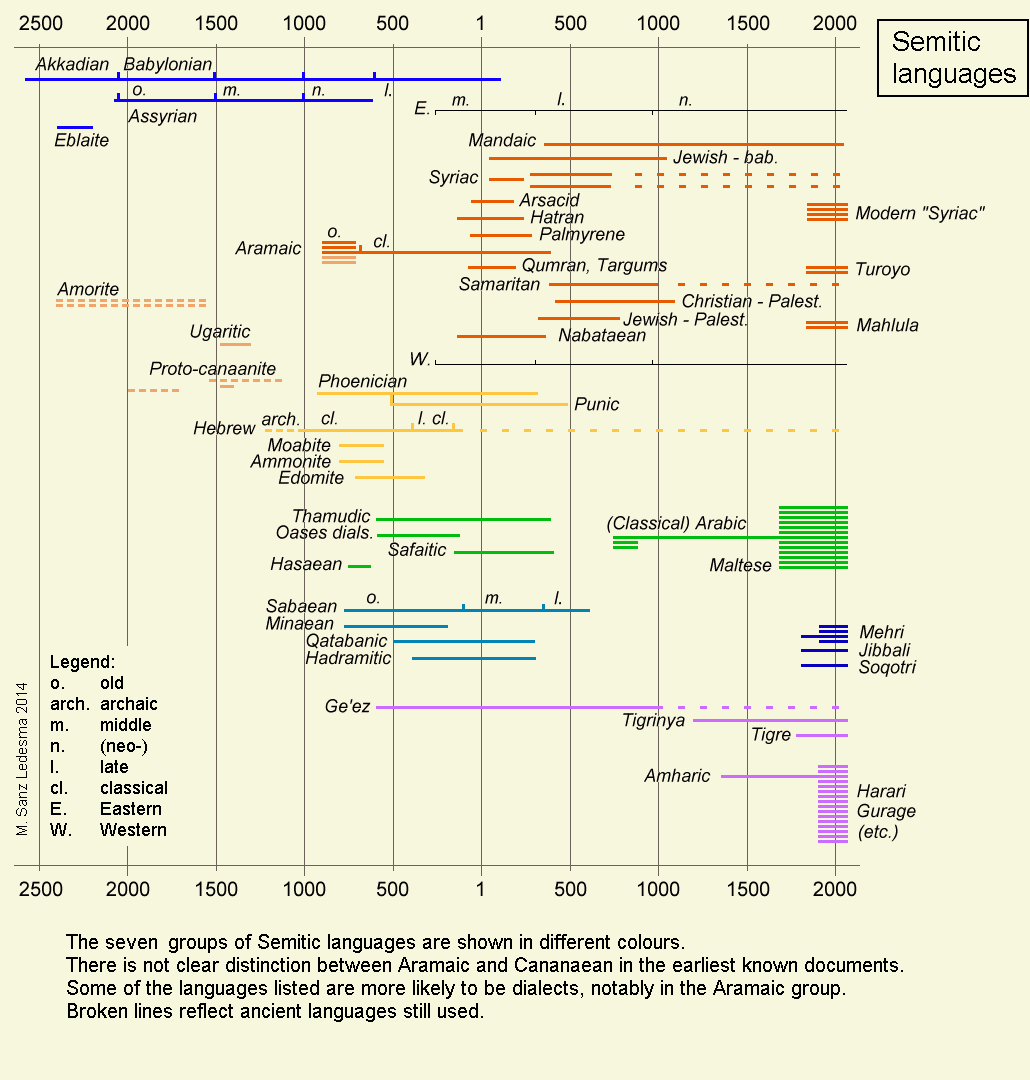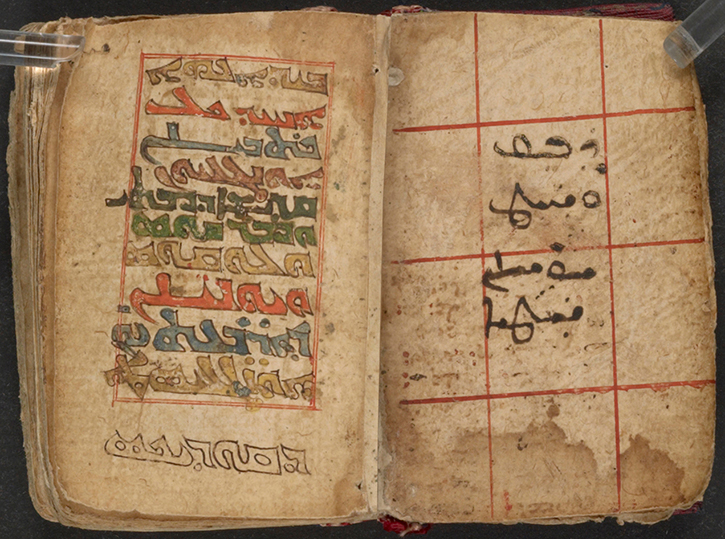|
Senaya
Senaya or Sanandaj Christian Neo-Aramaic is a dialect of Northeastern Neo-Aramaic originally spoken by Christians in Sanandaj, Kurdistan Province in Iran. Most speakers now live in California, United States and few families still live in Tehran, Iran. They are mostly members of the Chaldean Catholic Church. Senaya is significantly different from Sanandaj Jewish Neo-Aramaic. Origin, history and use today The city of Sanandaj is at the southeastern periphery of the area of spoken modern Aramaic languages. Its geography makes the Neo-Aramaic of Sanandaj quite distinct from other dialects. Two different colloquial Aramaic dialects developed in Sanandaj: Jewish Hulaula and Christian Senaya. The two languages developed along different lines, so that the two are not mutually comprehensible. One distinctive difference between the two is the sound change associated with the Middle Aramaic fricative ''θ'' (''th''), often rendered as ''l'' in Hulaula, and ''s'' in Senaya. For examp ... [...More Info...] [...Related Items...] OR: [Wikipedia] [Google] [Baidu] |
Estiphan Panoussi
Estiphan Panoussi (born September 11, 1935 in Sanandaj, Iran) is an Iranian philologist, philosopher, orientalist, and international scholar of Iranian Assyrian origin. He is professor emeritus of the University of Gothenburg and native speaker of Senaya, a Northeastern Neo-Aramaic language. Life After studying philosophy in Rome M.A. Philosophy (Pontifical Urban University) in 1958, Panoussi went to study oriental philology and philosophy at the Catholic University of Louvain and graduated with a Ph.D. degree in Oriental Philology and History. This was followed by research work in Iranian philology and Semitic studies at Tübingen. In 1967 Panoussi also received his second Ph.D. in Philosophy in Leuven. He acquired the knowledge of 10 ancient oriental languages, in particular he is considered as expert on the dialects of Aramaic, the language of Jesus, such as the marginal languages of the Senaya language. Panoussi is versed in medieval Arabic, ancient Greek, medieval Persian ... [...More Info...] [...Related Items...] OR: [Wikipedia] [Google] [Baidu] |
Northeastern Neo-Aramaic
Northeastern Neo-Aramaic (NENA) is a grouping of related dialects of Neo-Aramaic spoken before World War I as a vernacular language by Jews and Assyrian Christians between the Tigris and Lake Urmia, stretching north to Lake Van and southwards to Mosul and Kirkuk. As a result of the Assyrian genocide, Christian speakers were forced out of the area that is now Turkey and in the early 1950s most Jewish speakers moved to Israel. The Kurdish-Turkish conflict resulted in further dislocations of speaker populations. As of the 1990s, the NENA group had an estimated number of fluent speakers among the Assyrians just below 500,000, spread throughout the Middle East and the Assyrian diaspora. In 2007, linguist Geoffrey Khan wrote that many dialects were nearing extinction with fluent speakers difficult to find. The other branches of Neo-Aramaic are Western Neo-Aramaic, Central Neo-Aramaic (Turoyo and Mlahso), and Mandaic. Some linguists classify NENA, as well as Turoyo and Mlah ... [...More Info...] [...Related Items...] OR: [Wikipedia] [Google] [Baidu] |
Semitic Languages
The Semitic languages are a branch of the Afroasiatic languages, Afroasiatic language family. They include Arabic, Amharic, Tigrinya language, Tigrinya, Aramaic, Hebrew language, Hebrew, Maltese language, Maltese, Modern South Arabian languages and numerous other ancient and modern languages. They are spoken by more than 330 million people across much of Western Asia, West Asia, North Africa, the Horn of Africa, Malta, and in large Immigration, immigrant and Expatriate, expatriate communities in North America, Europe, and Australasia. The terminology was first used in the 1780s by members of the Göttingen school of history, who derived the name from Shem, one of the three Generations of Noah, sons of Noah in the Book of Genesis. Semitic languages List of languages by first written account, occur in written form from a very early historical date in West Asia, with East Semitic languages, East Semitic Akkadian language, Akkadian (also known as Ancient Assyrian language, Assyrian ... [...More Info...] [...Related Items...] OR: [Wikipedia] [Google] [Baidu] |
Aramaic Language
Aramaic (; ) is a Northwest Semitic languages, Northwest Semitic language that originated in the ancient Syria (region), region of Syria and quickly spread to Mesopotamia, the southern Levant, Sinai Peninsula, Sinai, Southeastern Anatolia Region, southeastern Anatolia, and Eastern Arabia, where it has been continually written and spoken in different variety (linguistics), varieties for over three thousand years. Aramaic served as a language of public life and administration of ancient kingdoms and empires, particularly the Neo-Assyrian Empire, Neo-Babylonian Empire, and Achaemenid Empire, and also as a language of divine worship and religious study within Judaism, Christianity, and Gnosticism. Several Neo-Aramaic languages, modern varieties of Aramaic are still spoken. The modern Eastern Aramaic, eastern branch is spoken by Assyrian people, Assyrians, Mandaeans, Mandeans, and Mizrahi Jews.{{cite book , last1=Huehnergard , first1=John , author-link1=John Huehnergard , last2=Rub ... [...More Info...] [...Related Items...] OR: [Wikipedia] [Google] [Baidu] |
Assyrian Neo-Aramaic
Suret ( Help:IPA for Aramaic, [ˈsuːrɪtʰ] or Help:IPA for Aramaic, [ˈsuːrɪθ]), also known as Assyrian, refers to the varieties of Northeastern Neo-Aramaic (NENA) spoken by Christians, namely Assyrian people, Assyrians.Nordhoff, Sebastian; Hammarström, Harald; Forkel, Robert; Haspelmath, Martin, eds. (2013). "Northeastern Neo-Aramaic". Glottolog 2.2. Leipzig: Max Planck Institute for Evolutionary Anthropology. The various NENA dialects descend from Old Aramaic, the ''lingua franca'' in the later phase of the Assyria, Assyrian Empire, which slowly displaced the East Semitic languages, East Semitic Akkadian language beginning around the 10th century BC.Bae, C. Aramaic as a Lingua Franca During the Persian Empire (538-333 BCE). Journal of Universal Language. March 2004, 1-20. They have been further heavily influenced by Syriac language, Classical Syriac, the Aramaic#Middle Aramaic, Middle Aramaic dialect of Edessa, after its adoption as an official Sacred language, liturgi ... [...More Info...] [...Related Items...] OR: [Wikipedia] [Google] [Baidu] |
Sanandaj
Sanandaj (; ) is a city in the Central District of Sanandaj County, in the Kurdistan province of Iran, serving as capital of the province, the county, and the district. With a population of 414,069, it is the second largest Kurdish city and 23rd largest city overall in Iran. History Sanandaj's founding is fairly recent, (about 250 years ago), yet in its short existence it has grown to become one of the centers of Kurdish culture.Geoffrey Khan, The Jewish Neo-Aramaic Dialect of Sanandaj, Piscataway NJ: Gorgias Press, p. 1. During the Iran–Iraq War the city was attacked by Iraqi planes and saw disturbances. Since 2019, UNESCO has recognized Sanandaj as Creative City of Music. The name "Sinna" first appears in records from the 14th century CE. Before this, the main city in the region was Sisar, whose exact location is unknown. Sisar was also called "Sisar of Sadkhaniya", or "Sisar of the hundred springs", and it has been proposed that the current name of "Sinna" is a ... [...More Info...] [...Related Items...] OR: [Wikipedia] [Google] [Baidu] |
Chaldean Neo-Aramaic
Suret ( �suːrɪtʰor �suːrɪθ, also known as Assyrian, refers to the varieties of Northeastern Neo-Aramaic (NENA) spoken by Christians, namely Assyrians.Nordhoff, Sebastian; Hammarström, Harald; Forkel, Robert; Haspelmath, Martin, eds. (2013). "Northeastern Neo-Aramaic". Glottolog 2.2. Leipzig: Max Planck Institute for Evolutionary Anthropology. The various NENA dialects descend from Old Aramaic, the ''lingua franca'' in the later phase of the Assyrian Empire, which slowly displaced the East Semitic Akkadian language beginning around the 10th century BC.Bae, C. Aramaic as a Lingua Franca During the Persian Empire (538-333 BCE). Journal of Universal Language. March 2004, 1-20. They have been further heavily influenced by Classical Syriac, the Middle Aramaic dialect of Edessa, after its adoption as an official liturgical language of the Syriac churches, but Suret is not a direct descendant of Classical Syriac. Suret speakers are indigenous to Upper Mesopotamia, north ... [...More Info...] [...Related Items...] OR: [Wikipedia] [Google] [Baidu] |
Hulaula Language
Trans-Zab Jewish Neo-Aramaic, also known as Hulaulá (),(Endangered Languages of) The Middle East and North Africa is a grouping of related dialects of originally spoken by Jews in and easternmost |
Sanandaj Jewish Neo-Aramaic
Sanandaj Jewish Neo-Aramaic is a variety of Northeastern Neo-Aramaic originally spoken by Jews in the city of Sanandaj Sanandaj (; ) is a city in the Central District of Sanandaj County, in the Kurdistan province of Iran, serving as capital of the province, the county, and the district. With a population of 414,069, it is the second largest Kurdish city a ..., Iran. It is much more closely related to other Trans-Zab Jewish Neo-Aramaic dialects than the Neo-Aramaic dialect spoken by Christians in the same town. Phonology The historically pharyngealized consonants /ṭ/ and /ṣ/ in the current language have merged with /t/ and /s/ in many environments but sometimes affect the pronunciation of surrounding vowels. /lˤ/ and /rˤ/ are consistently pharyngealized. Grammar Transitive verbs in the past tense are inflected for the oblique case with suffixes (which are prepositional phrases in origin), while intransitive verbs in the past tense are inflected by direct (n ... [...More Info...] [...Related Items...] OR: [Wikipedia] [Google] [Baidu] |
Iran
Iran, officially the Islamic Republic of Iran (IRI) and also known as Persia, is a country in West Asia. It borders Iraq to the west, Turkey, Azerbaijan, and Armenia to the northwest, the Caspian Sea to the north, Turkmenistan to the northeast, Afghanistan to the east, Pakistan to the southeast, and the Gulf of Oman and the Persian Gulf to the south. With a Ethnicities in Iran, multi-ethnic population of over 92 million in an area of , Iran ranks 17th globally in both List of countries and dependencies by area, geographic size and List of countries and dependencies by population, population. It is the List of Asian countries by area, sixth-largest country entirely in Asia and one of the world's List of mountains in Iran, most mountainous countries. Officially an Islamic republic, Iran is divided into Regions of Iran, five regions with Provinces of Iran, 31 provinces. Tehran is the nation's Capital city, capital, List of cities in Iran by province, largest city and financial ... [...More Info...] [...Related Items...] OR: [Wikipedia] [Google] [Baidu] |
Christian Northeastern Neo-Aramaic Dialects
A Christian () is a person who follows or adheres to Christianity, a Monotheism, monotheistic Abrahamic religion based on the life and teachings of Jesus in Christianity, Jesus Christ. Christians form the largest religious community in the world. The words ''Christ (title), Christ'' and ''Christian'' derive from the Koine Greek title (), a translation of the Biblical Hebrew term ''mashiach'' () (usually rendered as ''messiah'' in English). While there are diverse interpretations of Christianity which sometimes conflict, they are united in believing that Jesus has a unique significance. The term ''Christian'' used as an adjective is descriptive of anything associated with Christianity or Christian churches, or in a proverbial sense "all that is noble, and good, and Christ-like." According to a 2011 Pew Research Center survey, there were 2.3 billion Christians around the world, up from about 600 million in 1910. Today, about 37% of all Christians live in the Americas, about 26% ... [...More Info...] [...Related Items...] OR: [Wikipedia] [Google] [Baidu] |
Assyrians In Iran
Assyrians in Iran (; ), or Iranian Assyrians, are an ethnic and linguistic minority in present-day Iran. The Assyrians of Iran speak Assyrian Neo-Aramaic, a neo-Aramaic language descended from the eastern dialects of the old Aramaic language with elements of Akkadian, and are Eastern Rite Christians belonging mostly to the Assyrian Church of the East and also to the Ancient Church of the East, Assyrian Pentecostal Church, Chaldean Catholic Church and Assyrian Evangelical Church. They share a common history and ethnic identity, rooted in shared linguistic, cultural and religious traditions, with Assyrians in Iraq, Assyrians in Turkey and Assyrians in Syria, as well as with the Assyrian diaspora. The Assyrian community in Iran numbered approximately 200,000 prior to the Islamic Revolution of 1979. In 1987, there were an estimated 50,000 Assyrians living in Tehran. However, after the revolution many Assyrians left the country, primarily for the United States; the 1996 Iran ... [...More Info...] [...Related Items...] OR: [Wikipedia] [Google] [Baidu] |




